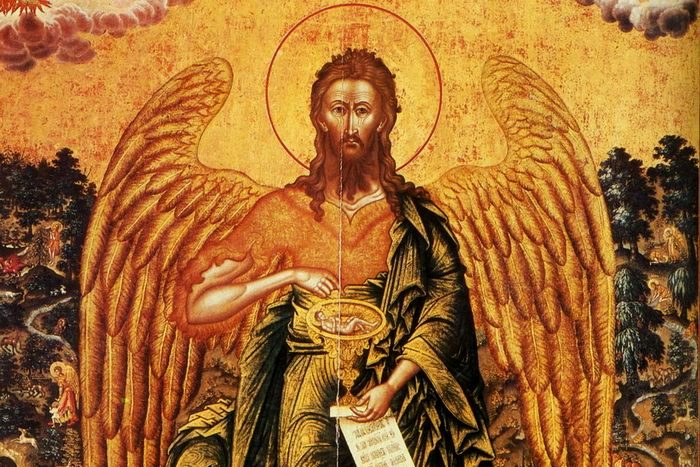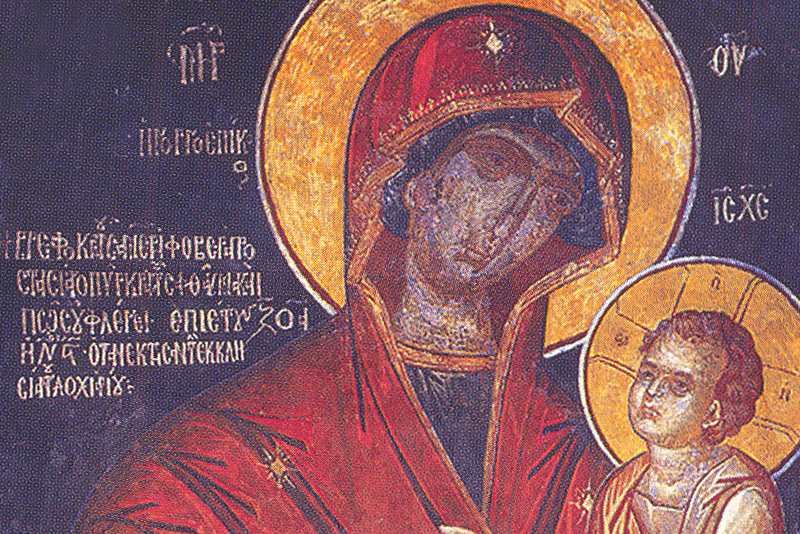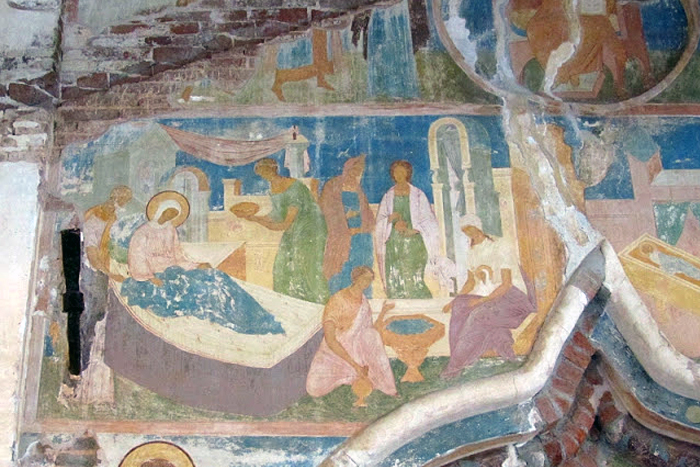
Feast Days: September 24
July 21
HISTORY OF THE ICON
At the end of the 17th century lived a pious priest, Fr. Ioann Ilyich Umanov. He served in the newly-sprung village of Kaplunovka on the Khukhra River, 20 versts from the town of Akhtyrka in Kharkov province. In 1689 a miraculous image of the Mother of God appeared to him.
It was September 8, the feast day of the Nativity of the Theotokos when he saw in a dream an old man who told him that in three days three icon painters aged 70, 80, and 90 would come to him. The elder ordered Fr Ioann to take a stack of icons from the oldest of the three, return the top seven to the icon painter, and keep the eighth one, which would be the Kazan icon. In return, he promised the priest mercy and grace from the Mother of God. After having that dream Fr. Ioann fasted and celebrated the Liturgy daily. On the third day, he returned home from church and saw three elderly icon painters walking towards him. He invited them to his place and received them cordially. Then he took a stack of icons from the eldest man. As it was predicted in a dream, the eighth of them turned out to be a Kazan icon of the Mother of God. The icon painters, in gratitude for the good reception, wished to give the icon away for free and barely agreed to take 15 kopecks* for it. After that, they continued on their way.
Father Ioann Umanov put the icon in his room and kept a lit candle in front of it day and night. On the night of the third Sunday, he saw in a dream a Virgin of extraordinary beauty Who touched him with her hand and said to him:
– Priest Ioann, do not force Me to be in your house, but take me to My church!
The church in Kaplunovka was in honor of the Nativity of the Mother of God. When Fr. John woke up, his cell was illuminated with a bright light. He took heart of grace, went up to the icon, and saw that tears were streaming from the eyes of the image. He immediately gathered people telling them about the origin of the icon and the events of the previous night. After a prayer service, the icon was solemnly transferred to the church, where it became famous for miracles. By the name of the village, people began to call the icon Kaplunovskaya.
For a long time following these events, Father Ioann served in the village and rejoiced over the ever-increasing glory of the icon. He was also delighted to see the national significance that the icon received during the war between Charles XII and Peter the Great.
When the Swedish king Karl XII invaded Little Russia** with his troops, Peter was looking for Heavenly help as he was on his way to meet with him. He summoned Father Ioann to Kharkov with the Kaplunovskaya icon and kept the latter with the army. In the meantime, Karl and Ivan Mazepa reached Kaplunovka and settled down there to rest occupying Fr. Ioann’s house. Several of Karl’s soldiers wanted to set fire to the church, but the firewood they put round the temple would not catch fire. Karl saw that from the window and asked Mazepa for an explanation why people could not set the temple on fire. Mazepa said that the temple was probably guarded by the Mother of God, since Her icon, recognized as miraculous, was located here. The Swedish king ordered to bring him one of the Kaplunovka residents. They found a man in the forest, and Karl began to ask him where Peter and the troops were located. The man replied that Peter was in Kharkov. Then Karl asked where the icon of the Mother of God was. When he heard that it had been taken to the army, he told Mazepa,
“We were not able to set the church on fire with the icon missing from it. It is probably going to be very bad for us when and where it is present.
Before the Battle of Poltava began, Peter commanded to carry the Kaplunovskaya icon before the ranks of the Russian army and prayed with tears in front of it. Then, after the battle, priest Ioann with the icon was called to Moscow and from there he was sent home together with the shrine. Peter made a gilded silver revetment with precious stones and a silver tabernacle for the icon.
The tabernacle contained an inscription: “In this icon case, Emperor Peter I, after the end of the 1709 war near Poltava with Charles XII, sent the miraculous image of the Mother of God back to Kaplunovka.”
In 1744, in Kharkov, a narrative about the Kaplunovskaya icon was compiled based on the information received from priest Fr Ioann Umanov. Later the testimonies of subsequent signs and healings coming from the icon were added to it.
The celebration of Kaplunovskaya image also takes place on July 8, the feast day of the Kazan icon.
*1 copeck = 0.01 of a Russian rouble.
**Little Russia (Малороссия) – historical name of today’s Ukraine in official records of the Russian Empire
Translated by The Catalogue of Good Deeds
Source: https://azbyka.ru/days/ikona-kazanskaja-kaplunovskaja




